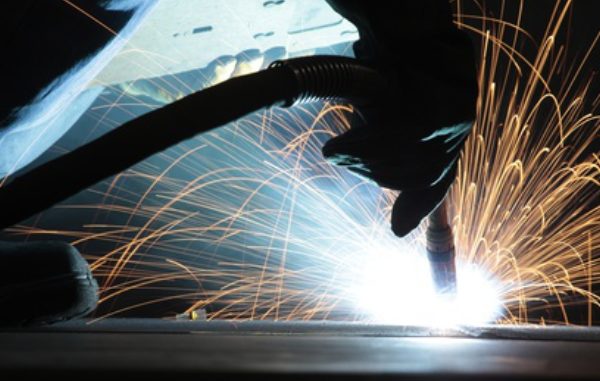
Selection of a welding method depends on stainless steel composition, however quality of the weld is affected by the type of flux. The best results can be obtained by selecting a proper welding method that depends on many factors, e.g. intended use. A few methods are used for welding stainless steels.
One of them is Gas Metal Arc Welding (GMAW) the main advantage of which is the rate of binding using a reel of regular wire or reel with flux core. One must remember that the basic defect of this method is high cost of a device feeding the wire, electrical connections and gas shield. No or a little bit of slag cause that there is no need to remove it between electrode passes. Wide range of thermal capacity and the rate of the process are achieved with the application of welding with a solid wire or powder wire using three methods: droplet welding (gravity), short arc welding and spraying method. Among three of them, the droplet welding is the rarest in case of stainless steels, in turn the spray method can be applied with thinner cross-sections and when welding not matched (shifted) elements, however short arc welding is commonly used to connect thin pipes and sheets of stainless steel.
In the GMAW method, the basic necessary factor is gas shield, which prevents oxidation of steel alloys in the arc. Even small admixture of air may significantly improve stability of the arc, however losses in aluminium or titanium may occur in such a case. Any spattering, which may be formed using the GMAW method, is not admissible when it comes to weld quality, however the last achievements related to welds made using short arc have reduced this problem.
Gas Tungsten Arc Welding (GTAW) allows for achieving relatively high quality, clean welds, with small number of defects. This method is applied wherever observance of strict standards and regulations is necessary, i.e. in food or nuclear industry, however it is more time-consuming comparing to the GMAW method. In order to obtain clean welds with stainless steels that include aluminium, alternating current is used or more commonly electronegative electrodes of direct current supplied with direct current.
Another method is Shielded Metal Arc Welding (SMAW) used during repairs or wherever welding operations are not necessary too often. The SMAW method is used for production of stainless steel where the equipment to make a weld is inexpensive. In general, in this case in order to make a weld on stainless steel, four types of covered electrodes are used: basic, rutile, rutile-silicate and thick-covered for flat position welding and horizontal welding. Welding position affects the selection of an electrode.
Submerged Arc Welding (SAW)
This type of welding can be characterized by intensive interaction between a wire and flux with accompanying chemical exchange of elements. This is the most often used method when binding thicker elements of austenitic stainless steels, normally of thickness above 12 mm. The SAW method can be applied where there is no pressure on the rate of welding solidification and where the heat can be dispersed more easily.
As one can see, each of the aforementioned methods can be applied at individual levels of production, machining and utilization of stainless steels within metallurgical sector.















